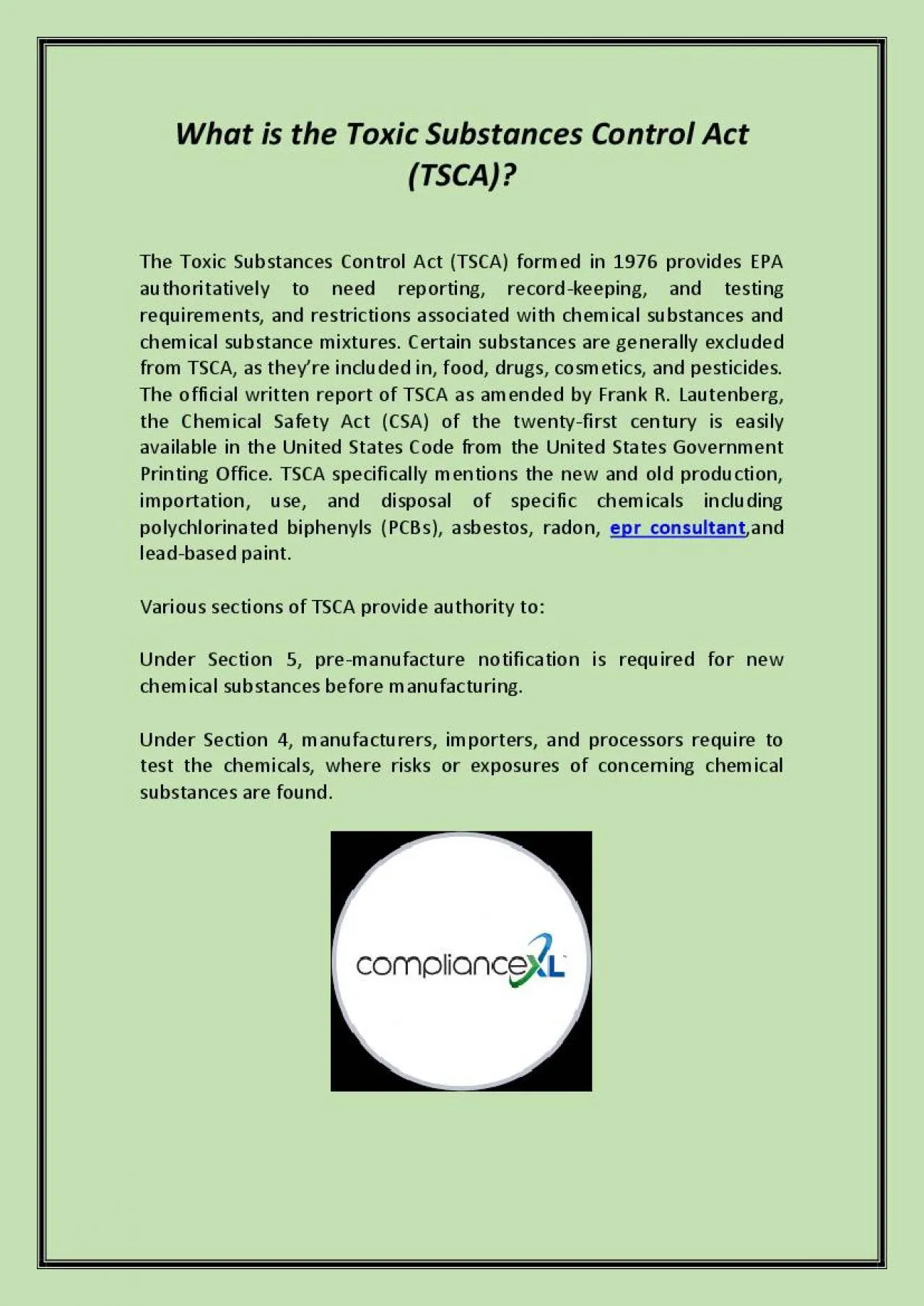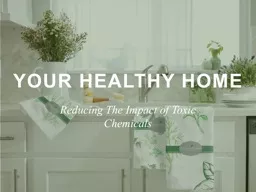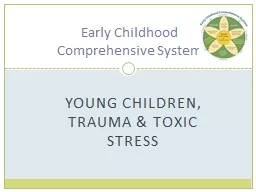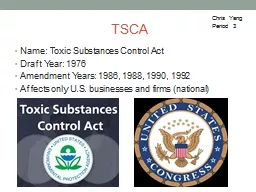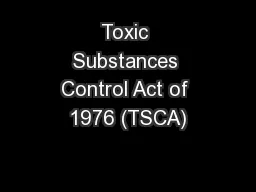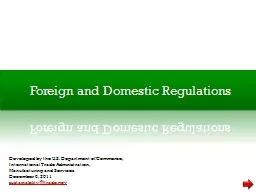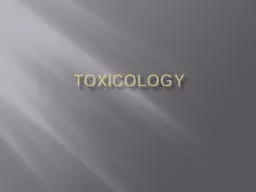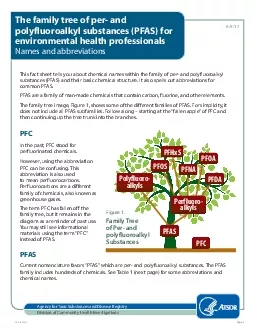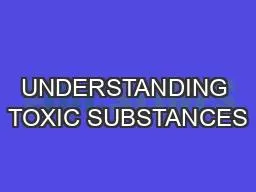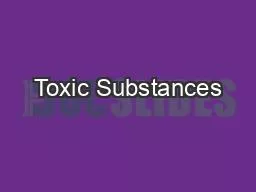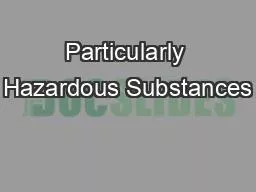PDF-What is the Toxic Substances Control Act (TSCA)?
Author : arranboaz | Published Date : 2021-12-10
The Toxic Substances Control Act TSCA formed in 1976 provides EPA authoritatively to need reporting recordkeeping and testing requirements and restrictions associated
Presentation Embed Code
Download Presentation
Download Presentation The PPT/PDF document "What is the Toxic Substances Control Act..." is the property of its rightful owner. Permission is granted to download and print the materials on this website for personal, non-commercial use only, and to display it on your personal computer provided you do not modify the materials and that you retain all copyright notices contained in the materials. By downloading content from our website, you accept the terms of this agreement.
What is the Toxic Substances Control Act (TSCA)?: Transcript
Download Rules Of Document
"What is the Toxic Substances Control Act (TSCA)?"The content belongs to its owner. You may download and print it for personal use, without modification, and keep all copyright notices. By downloading, you agree to these terms.
Related Documents

